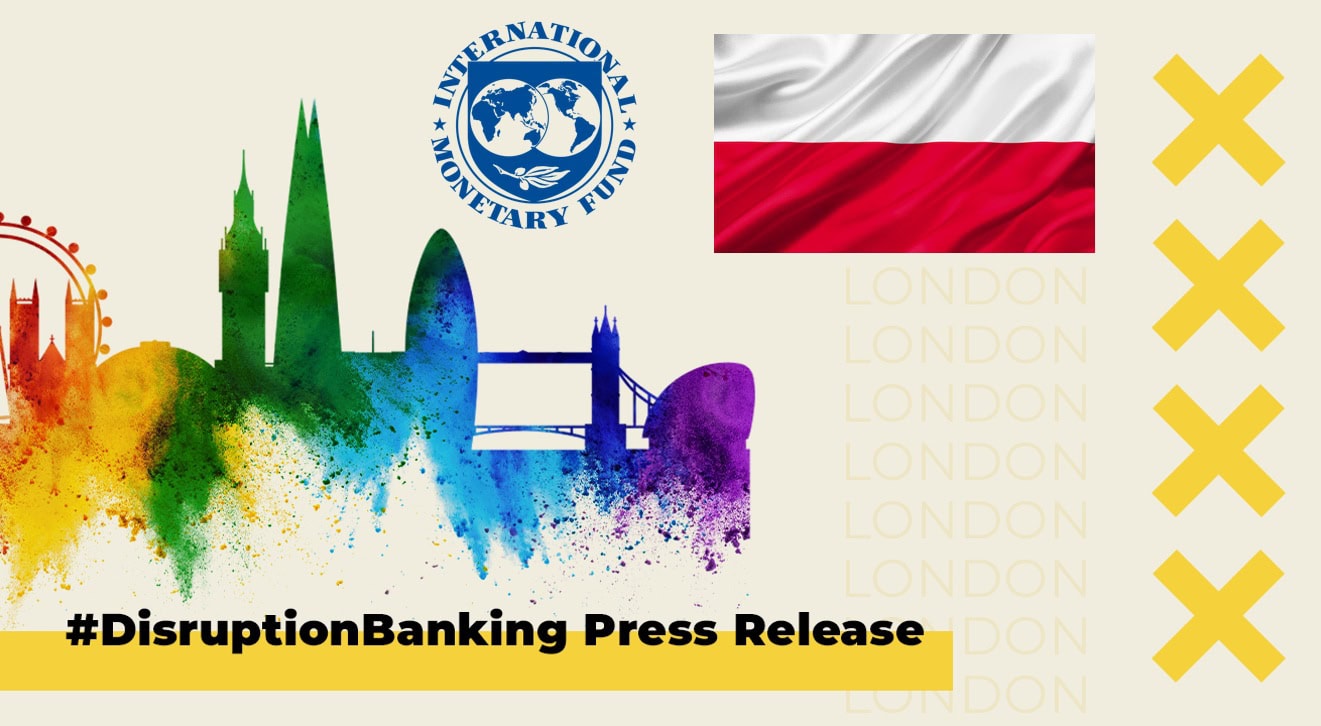A Concluding Statement describes the preliminary findings of IMF staff at the end of an official staff visit (or ‘mission’), in most cases to a member country. Missions are undertaken as part of regular (usually annual) consultations under Article IV of the IMF’s Articles of Agreement, in the context of a request to use IMF resources (borrow from the IMF), as part of discussions of staff monitored programs, or as part of other staff monitoring of economic developments.
The authorities have consented to the publication of this statement. The views expressed in this statement are those of the IMF staff and do not necessarily represent the views of the IMF’s Executive Board. Based on the preliminary findings of this mission, staff will prepare a report that, subject to management approval, will be presented to the IMF Executive Board for discussion and decision.
Washington, DC – November 24, 2025:
An International Monetary Fund mission led by Geoff Gottlieb and comprising Kareem Ismail, Moheb Malak, Alla Myrvoda, and Yang Yang visited Warsaw during November 12–24, 2025, in the context of the 2025 Article IV consultation.
Poland’s recovery remains strong, with one of the highest growth rates in Europe, and inflation now within the central bank’s target range. Growth has been driven by robust wage gains and accommodative fiscal policies, while inflation has eased thanks to appropriately tight monetary policy and favorable external factors, including lower global prices and a stronger exchange rate. However, this economic recovery has come partly at the cost of a sharply deteriorating fiscal position: the deficit is among the highest in Europe, and public debt is rising rapidly. Looking ahead, growth is expected to remain strong but rising fiscal risks and structural challenges—such as population aging, limited innovation, and low investment—threaten to derail Poland’s convergence with the global frontier. Addressing these issues will require decisive reforms amid a polarized political environment.
Policy priorities include:
- Stabilizing public debt through credible fiscal consolidation, anchored in high-quality measures and a strengthened fiscal framework.
- Ensuring that inflation becomes well-anchored around the midpoint of the target range by slowing the pace of any further monetary easing. .
- Reducing distortions and legal risks that constrain credit provision while preserving financial stability.
- Advancing structural reforms, both at home and at the EU level, to boost innovation, deepen capital markets, support labor productivity, and increase energy competitiveness.
Recent Developments
Poland’s economic recovery has been impressive. Real output has risen by 6 percent since end-2023, driven by rising real wages and strong private consumption. Fiscal stimulus has supported the recovery in demand, though appropriately tight monetary policy partly offset these gains. The economy is now operating near potential, and labor markets remain relatively tight, but employment in the corporate sector has been falling and wage growth has been cooling substantially. A negative output gap and appropriately tight monetary policies have helped bring down inflation, which reached 2.8 percent year-on-year in October and falling within the NBP’s inflation target range of 2.5 percent +/-1 percentage point. The current account has shifted to a small deficit, reflecting higher consumption and weak foreign demand, with the external position now broadly in line with the level implied by medium-term fundamentals and desirable policies.
Fiscal imbalances have widened considerably. In 2025, the fiscal deficit and public debt are projected to reach 7 percent and almost 60 percent of GDP, respectively. Poland has the second largest fiscal deficit in Europe this year even though the economy is strong and the output gap largely closed. The widening of the fiscal deficit since 2021 solely reflects a 6.5 percent of GDP increase in expenditures; revenues actually rose by 1.2 percent of GDP during this period. Spending now matches levels in advanced European economies—despite differences in composition—while revenues remain closer to levels seen in Central and Eastern Europe. As a result, public debt has been rising at around 5 percent of GDP annually in recent years.
Economic Outlook and Risks
The near-term growth outlook is positive. Growth is projected to reach 3.2 percent in 2025 and accelerate to 3.4 percent in 2026 as the execution of NextGen EU (NGEU) funds accelerates before their expiry. Wage growth is expected to slow gradually given signs of cooling in the labor market, but stay relatively high, supported by strong productivity gains. Consequently, household spending is expected to slow but will continue to play an important role in supporting growth. Strong consumption, the lagged effects of real exchange rate appreciation, and the release of EU funds will boost imports, widening the current account deficit. The fiscal deficit is expected to decline only marginally amid political gridlock over consolidation measures.
We see rising fiscal vulnerabilities over the medium term, despite a relatively strong growth outlook. Growth will slow to 2.5 percent by 2030 as the population ages and productivity gains moderate, consistent with Poland’s higher income per capita. Poland’s external position is expected to gradually stabilize around a small current account deficit of 1.6 percent of GDP. Fiscal deficits are projected to remain elevated in the baseline with moderate cumulative fiscal consolidation of about 2 percent of GDP over the medium term, causing debt to rise to 76 percent of GDP in 2030, including due to around 3 percent of GDP in RRF loans on-lent to the private sector. As a result, staff now assesses Poland’s risk of sovereign debt stress to be at medium compared to low in our previous assessment.
Amid intense political polarization and high global uncertainty, the balance of risks is to the downside. Four domestic concerns stand out. First, investment could fall short if authorities cannot fully access the remaining NGEU grants before their expiry in 2026. Second, with large fiscal deficits and limited planned consolidation, market sentiment could shift abruptly, pushing up yields. Third, we could see inflation pressures resume if growth surprises positively and there is less slack in the economy than currently estimated. And fourth, the significant appreciation of the real effective exchange rate (20 percent over 2023-24) may hurt competitiveness more than currently estimated, weighing on growth and widening external imbalances. Externally, the key risks remain a deterioration in regional security and further headwinds to global trade.
Alongside these risks, upside opportunities and strong fundamentals provide important buffers. There is upside potential from higher immigration, a stronger catalytic effect from NGEU funds, and productivity gains from digital, AI, and green transitions. Moreover, several factors help cushion risks: ample foreign exchange reserves, a flexible exchange rate, a diverse export and production base, and financially healthy enterprises, households, and banking system.
Safeguarding Fiscal Sustainability
Arresting the rapid rise in public debt should be a priority. Specifically, we recommend a cumulative fiscal adjustment of 4 percent of GDP by 2030, which is 2 percent of GDP more than in our baseline projection. The consolidation of 0.6 percent of GDP targeted in the 2026 budget is a good first step, but, given strong growth, next year we would recommend looking for opportunities to overperform. This recommended fiscal path would bring the medium-term deficit to 3 percent of GDP and stabilize debt at a relatively high 70 percent of GDP. Further adjustment of 1.5 percent of GDP thereafter would be needed to rebuild fiscal buffers and fully comply with the EU Economic Governance Framework.
The right composition of the adjustment will depend on the size and role of the public sector society wishes to maintain. If current expenditure levels on social spending, defense, and public wages are to be preserved while leaving room for future pressures from aging and climate, revenues will need to rise. In this regard, the main outlier in the Polish tax system is the personal income tax (PIT) which generates 5 percent of GDP less in revenues than the EU average. VAT revenue could also be strengthed by reducing exemptions and preferential rates which are among the most costly in the EU. Finally, the preferential and regressive taxation of real estate (rental income, capital gains, property tax, and VAT) could be moderated, particularly on second and third properties. If higher taxes prove infeasible, Poland would need to revert to a smaller public sector, for example through better targeting of social benefits and a smaller public wage bill.
Further strengthening the national fiscal framework is important to bolstering credibility, particularly amid recent debt increases. Progress with recent amendments to the public finance legislation was a welcome step in strengthening the national fiscal framework by widening the coverage of the stabilizing expenditure rule. Meanwhile, steps to establish the fiscal council including the recent appointment of a President are welcome. It is critical that the council is independent and adequately funded.
Ensuring Durable Descent of Inflation to Target
Recent progress in reducing inflation and related pressures has been encouraging. Headline and core inflation have fallen to 2.8 and 3 percent, respectively, both within the National Bank of Poland’s 2.5 percent +/- 1 percentage point target range. Nominal wage growth has decelerated faster than expected and, at 7.5 percent y/y in Q3, is approaching the level consistent with the inflation target. The recently approved 3 percent increase in both the minimum wage and public sector wages for 2026 will help contain pressures further. Moreover, surveys suggest that expectations remain broadly anchored. This has all been achieved with relatively limited costs to economic growth or employment. On balance, recent developments are an endorsement of the caution taken before the rate setting committee started easing in May 2025.
That said, several challenges remain in the disinflation process. The amount of slack in the economy is very uncertain but likely already close to zero. Some price pressures remain high with sequential services inflation in Q3 of slightly below 6 percent. Such pressures could increase further with economic activity projected to accelerate faster than potential next year on the back of past monetary easing and a scheduled surge in European funds. The fiscal deficit is projected to tighten next year but will remain high and continue to pose an overall risk to macroeconomic stability. And a material portion of recent disinflation reflects external factors (both import prices and currency appreciation) that could reverse suddenly.
Thus, on balance, with the policy rate now potentially close to neutral, we see merit in slowing the pace of any further easing. Given the extended period that inflation was above the target range, the long-term cost to credibility of easing too fast is likely larger than that of easing too slowly. We would advocate a wait-and-see approach to allow time to observe incoming data and seeing sustained dis-inflation towards the target. If core inflation continues to moderate, further easing might be possible. Throughout, we see communication that underscores the decision making process as more constructive than specific predictions for rates.
Reducing Frictions to Credit Provision while Preserving Financial Stability
The banking sector remains highly stable, supported by strong buffers in both capital and liquidity. Capitalization is near historical highs, with a Tier 1 ratio above 20 percent and ample excess capital over regulatory requirements. Basel III liquidity ratios are comfortably met and NBP stress tests indicate system resilience even under severe deposit outflows. Short-term deposits account for the majority of bank funding but they have proven to be a stable funding source during recent shocks, in part because concentration is low and about 80 percent of household deposits are guaranteed by deposit insurance. Bank profits have been elevated largely because most private credit (including two-thirds of mortgages) has floating interest rates which rose in line with tight monetary policy, while deposit rates have reacted less.
Given this overall stability, further regulatory tightening should carefully balance the extent of the risk with the cost of reducing it. The regulatory authorities’ have proposed a new Long-Term Funding Ratio on top of existing Basel III requirements. It aims to i) reduce liquidity risk from maturity mismatch by requiring relatively more wholesale (long-term) funding and ii) reduce interest rate risk by encouraging more fixed rate mortgages. While we broadly support these objectives, liquidity risks seem reasonably contained as noted above and the market is rapidly increasing fixed rate mortgages without such a ratio. Moreover, while more bond issuance would help diversify funding sources, it would also likely increase credit costs, creating a further barrier to raising structurally low levels of financial intermediation.
In our view, immediate attention is needed to help remove unnecessary barriers to private credit supply. The gap in Poland between lending and benchmark interest rates (so-called “mark-ups”) is the second highest in the EU. Structurally high lending rates are one of the reasons why credit provision as a share of GDP is still historically low. Mark-ups can be reduced with two reforms.
- Bank Tax – Asset taxes, like the current bank levy, increase interest margins more than taxes on profits. In addition, the current bank levy exempts holdings of government bonds and thus provides a disincentive for private sector credit. For both reasons, thereduces the relative size of the asset tax in favor of a CIT-top up is a welcome step. In the future, we would encourage going further and finding a way to replace the bank asset tax entirely in a fiscally neutral manner.
- Legal Risk – A second driver of high mark-ups is the high cost of legal risk, as well as legal uncertainty around lending contracts. To address this, ongoing efforts to create an optional but standard mortgage template that is in line with the law are very encouraging. In addition, penalties for contracts that are not fully consistent with the consumer creditlaw could be made more proportional to the size of the misconduct.
Reforms to Support Potential Growth
Poland has maintained impressively high growth but both domestic and EU-level reforms are needed to complete its convergence to the frontier. We see four key reform areas:
- Regulation – The government has made important progress on regulatory simplification, both at home with the Deregulation Task Force and at the EU-level with Omnibus legislation during the Polish Presidency. The next step in this agenda should be again at the EU level, supporting a forthcoming proposal for a “28th regime”, an optional legal framework for all EU firms that creates a common regulatory standard (e.g., in company law and accounting). This will help Polish firms to scale and become genuinely pan-European brands. However, to be effective, two points are crucial. First, Poland should insist the regime is sufficiently ambitious (i.e., cover a material share of the corporate legal framework) to increase efficiency for firms. And second, it is critical that this is adopted as a regulation, not as a directive, to avoid the variation in implementation that would undermine the core goal of the reform.
- Labor
- On labor supply, Poland, like most of Europe, faces headwinds to growth from adverse demographics and falling hours worked. The most effective ways of offsetting this are gradual increases in the retirement age and further well-integrated immigration. If these paths are not feasible, the core priorities are facilitating more part-time work, training for the inactive, and services that facilitate labor supply participation like child and elderly care.
- On labor productivity, the focus should be both skills and mobility. Given that Poland has the third lowest digital skills in the EU and participation in training is far below the EU average (25% vs 34%), it is important to work with the corporate sector to increase the access and relevance of training. With mobility, given persistently low unemployment, Polish employment services need to re-focus, away from joblessness and toward matching skills with needs. We would also encourage Poland to reduce the number of regulated professions (currently the highest in the EU) and support EU proposals to expand the system of automatic recognition of foreign credentials.
- Capital Markets – We would distinguish between two goals which are sometimes merged in the current policy debate:
- Increasing Returns on Households Savings – We think it is important to increase the risk-adjusted return on Polish household savings by reducing the currently excessive exposure to real estate and bank deposits in favor of a larger and more diverse set of financial assets. This can be achieved by reducing tax preferences for real estate (beyond the primary residence), increasing participation in third pillar pension funds, and increasing availability of low-cost and highly diversified investment products. On the latter, the government’s proposed “OKI accounts” could be productive, but it is crucial that guidelines do not restrict investments to domestic stocks as this limits diversification and reinforces financial fragmentation in Europe.
- Increasing Funding for Polish Firms – A separate goal is to increase Polish firms’ access to the financing needed to scale. For smaller risky firms that cannot rely on profits or bank loans, the government’s new Innovate Poland platform channeling institutional savings into alternative investment funds could help. For somewhat more established firms, our view is that only pan-European markets are sufficient to finance large or risky investments. Domestic markets, particularly in countries like Poland with low aggregate savings, are unlikely to provide the size and cost of funding needed to become pan-European brands. Hence, we continue to see the savings and investments union as critical for Poland. The near-term priority in supporting this goal is a forthcoming reform to increase the supervisory powers of the European Securities and Markets Authority (ESMA).
- Energy – As with other input markets, we think the way forward is deepening the single market for energy. To start, Poland should push the EU to develop a strategic blueprint for an integrated electricity system that better balances supply and demand across countries, reduces reliance on costly backup power plants and storage, and smooths price fluctuations. Meanwhile, the eventual implementation of ETS2 will allow Poland to meet emissions targets with a lower cost to output than with the current regulatory ceilings alone; the government can also cushion the impact of ETS2 on households by strengthening the “Clean Air” program which helps improve household energy efficiency. Finally, the government can build on its deregulation drive and simplify permitting in order to accelerate new renewables and modernization of the grid.
The mission thanks the authorities and other counterparts for their constructive engagement.
See Also:
The Rise in Popularity of Cryptocurrency in Poland | Disruption Banking
Is it Worth Investing in Poland in 2025? | Disruption Banking













